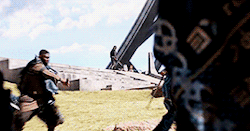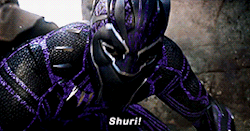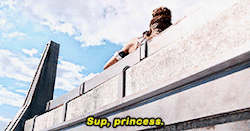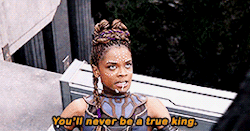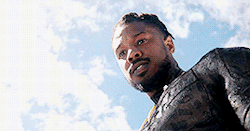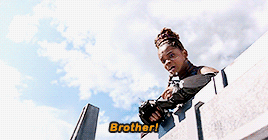Decided to move the the posts about the Black Panther movie to its own thread from the MCU thread
You are using an out of date browser. It may not display this or other websites correctly.
You should upgrade or use an alternative browser.
You should upgrade or use an alternative browser.
Disney+ Marvel's Black Panther
More options
Who Replied?Forgot how insufferable Du was about this movie too like Infinity War lol
BDP™️
Acknowledge Moi
Forgot how insufferable Du was about this movie too like Infinity War lol
Du was in rare form lol
Mister
Ignorance can be remedied. Stupidity is incurable.
So Black Panther did as well as it did because of memes and black Twitter?
This belongs here.
FUCK, knew i should've made BP its own thread
anyway
I did it lol
The Lonious Monk
Celestial Souljah
This thread was funny
Y'all would be confused as fuck if a white boy was like
"Wakanda forever, my nigga"
lol I've seen that many time. It's not confusing. Some of us understand how movies influence people. Again, white boys were dressing up as Black Panther for Halloween last year.
The original “Black Panther” ending was the scene in which Chadwick Boseman’s T’Challa addresses the United Nations and announced Wakanda will be opening up its resources for the world. Prior to that scene was Killmonger’s death, which originally culminated in the villain looking out on Wakanda and telling T’Challa, “It’s beautiful, but what are you going to do for everybody in the world who can’t see this?” This line of dialogue leading into the United Nations scene was “problematic for a few reasons,” according to Shawver.
“We realized that just as a character, for the journey of T’Challa, he can’t get the answer to the movie and what he needs to do from the villain, like straight-up exactly what he needs,” the co-editor said. “And that’s kind of what was happening. Secondly, it was a great performance, and [Michael B. Jordan] brought it, and it was painful to watch because you kind of don’t want this guy to die, but it didn’t fit his character.”
Writer-director Ryan Coogler decided to use reshoots to reshape the end of the movie, moving the United Nations sequence to the middle of the credits so that a new final scene could be crafted. Coogler scrapped Killmonger’s line so that T’Challa could come to this lesson on his own and wrote an ending that served to bring the story to a fulfilling conclusion. First, however, Coogler needed some help.
“One thing that we did was looking at all those Top 10 lists of best endings ever for movies,” Shawver said. “We found in a lot of these videos it was one of two things: it was either the twist ending or it was ‘The Godfather.’ Basically, the first time you meet Michael, he’s with Kay and he’s telling her he’s not like his family. ‘That’s not me, Kay. That’s them.’ The last scene we see him, he’s telling Kay he’s not like his family. But then he walks and the door shuts, and you know everything is different. But it’s the same conversation! And so it’s the circular nature why those kinds of endings feel like closure even though it’s open-ended.”
Using “The Godfather” as his blueprint, Coogler wrote the final scene to mirror his opening. As a result, Coogler brought the film rights back to Oakland, California and the childhood home of Killmonger. The final scene depicts T’Challa and Shuri (Letitia Wright) talking about starting Wakanda outreach programs, and Coogler’s direction is firmly planted in a community that will most benefit from T’Challa’s decision. This scene allowed Coogler to get to the heart of Killmonger’s scrapped line without the villain actually saying it.
Somebody bout to be in their feelings


The Lonious Monk
Celestial Souljah
It's ok. I'm sure Aquaman will get a nomination for Best Picture too.


Shaquille Sunflower
Naji Ramba
Little to no chance of winning but great that they got a nomination.
#marvelgang all wins no losses
#marvelgang all wins no losses
so i'm guessing halle deserved her oscar for monster's ball??
denzels best role was training day?
and it was a coincidence that they got it the same year??
they knew damn well niggaz was gonna riot if they ain't nominate that shit.....every year black folk swear they boycotting the oscars.....
what's the sure fire way to make sure they dont start that shit this year.....
but naw... i'll let yal run with yall reasoning...
denzels best role was training day?
and it was a coincidence that they got it the same year??
they knew damn well niggaz was gonna riot if they ain't nominate that shit.....every year black folk swear they boycotting the oscars.....
what's the sure fire way to make sure they dont start that shit this year.....
but naw... i'll let yal run with yall reasoning...
good for you, but a lotta black folk will just to see if BP wins and to outrage when it doesn't...im still not watching the oscars brah
nah, they'll see it on twittergood for you, but a lotta black folk will just to see if BP wins and to outrage when it doesn't...
nope. they gonna have viewing parties....they gonna call outta work......they gonna lose their fucking minds...have you been paying attention?nah, they'll see it on twitter
regardless of how racist and how much Hollywood has ignored black movies in the past.... this is our year... BP is the movie that will change everything....we needa make sure we anticipate the best validation we as black people can ever have.....
this is our time, and i will not let you downplay it AP, we will not watch this on twitter.....we're having parties and watching the Oscars as families this year
so i'm guessing halle deserved her oscar for monster's ball??
Uh..yeah
denzels best role was training day?
One of em. That's why it was his 2nd joint. But he should have 3 or 4.

